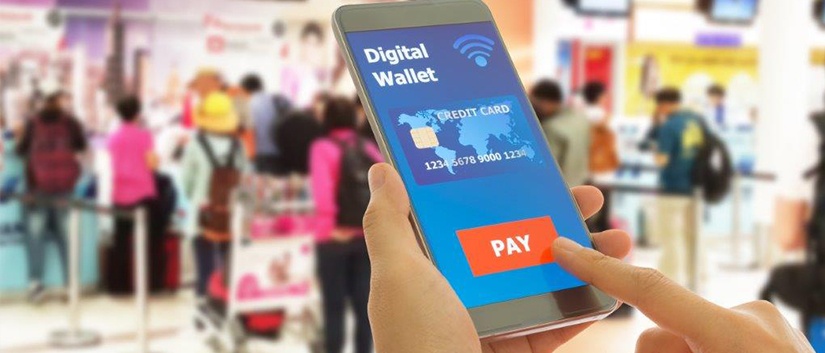Welcome to WordPress. This is your first post. Edit or delete it, then start writing!
Abstract: Right now we are going through a huge technological transition, and the Millennials have played an extensive role. From basic cell phones to java based feature phone to Smart-phones. We have become more adaptable. After all adaptation is the key to survival. Due to the recent demonetization in India, the government has and is been trying to push the idea of a cashless or a cash-free economy. The reason behind is vast, varied, and argumentative and the purpose of the blog is to understand and build a neutral view on the idea, concept, and, technology of the “Digital Wallets”, along with Pros and Cons of the same.
Introduction: The inception of the concept of digital wallets came in to place when the e-Commerce and online business-transaction, primarily between a “seller and a buyer” through online medium or applications, gained popularity. Initially, the usage and functionalities were limited, but in due time numerous functionalities were introduced which opened up different avenues and ways in which the “Digital Wallets” can be used to enhance the user requirements. Now, the definition, “a digital wallet refers to a software and information component that allows an individual to make electronic transactions. There are two sides of a “Digital Wallet”, the first one is at the client-side which can be easily maintained by the User and is compatible with most of the e-Commerce website. The server side which would be created by the organization for and about the user would be maintained by them in their server. It is also known as a “Thin Wallet”. Along with these, “Digital Wallets” can also be linked with the user’s personal bank account which would let the user do any kind of online transaction. Some of the recent “Digital Wallet” providers in India are: PayTM, Payzapp (by HDFC bank), Zeta, ApplePay, M-PESA etcetera.
Main Story: Although, it is a very fancy technology and if perfected in near future, literally we need not to carry a wallet, cash or even card for instance, and we can see the change happening around us. Local vendors and micro-retailers are also adopting the new technology since it is providing an ease of access which people could only imagine a decade back. But now, the question is, how safe is the whole process and system? Is there someone who’s monitoring the whole operations? If so then who’ll guarantee the privacy of information and the chances of data-loss. The key point concerning the “Digital Wallet” is that they are composed of digital wallet devices and digital wallet systems. A “digital wallet” device is the one which holds someone’s cash and cards along with a Bluetooth connection, such as the biometric wallet by Dunhill. Currently there are developments going on for Smart-phones with NFC (near field communication) digital wallet capabilities, e.g.: Samsung Galaxy series and the Google Nexus utilizing Google’s Android operating System. On the other hand, Apple Inc. is utilizing their Apple Pay service in their iPhone 6 and iPhone 6 plus.
Digital Wallets are being used more and more in the Asian Countries as well. One out of every five online consumer is using “Digital Wallets” for online transactions. A recent survey by MasterCard shows that among 8500 adults aged between 18-64 years, across 14 markets showed 36.7% users in India. India had threefold jump in their “Digital Wallet” usage from 29.3% in 2015 to 76.3% in 2016.
Now, the primary concern in the usage of “Digital Wallets” is related to the dependability of the Software based “Digital Wallets”, and secondly the vulnerability of these systems, since they are build on open source technologies. The consumer expects a faster and a smoother system. It is surprising to see how quickly a new technology changes customer habits and expectations which in turn change the quality of life. It breaks the paradigm of the previous structure. Coming to the point, the high expectations of the users and the change being implemented at a high pace, it’s difficult for the companies to maintain or build any standardized security and framework structure while developing the systems, which in turn makes it more vulnerable, cause as we know generating new revenues is at the heart of the technology.
Conclusion: What makes a digital payments journey fly or die? Given the rate of growth for the past 5 years, banks, Fintech’s along with the standalone digital payments system’s providers need to choose between compliance and competition, as they explore new technology that meet the challenges of digitalization of the entire banking system and also cater to the changes in the customer behavior. Open banking services and developer-friendly APIs which are the basics of underlying principles of BaaS and BaaP are one of the biggest concerns relating to security in eCommerce applications. So in order to provide a seamless, secured and robust service the key players in this avenue needs to define a structure and a robust path in order to suffice to the customer requirements along with that making the system the least vulnerable. As a Millennial, I hope to see the future world on the digital platform maintaining the integrity of the Human life and a balance between technology and nature.





